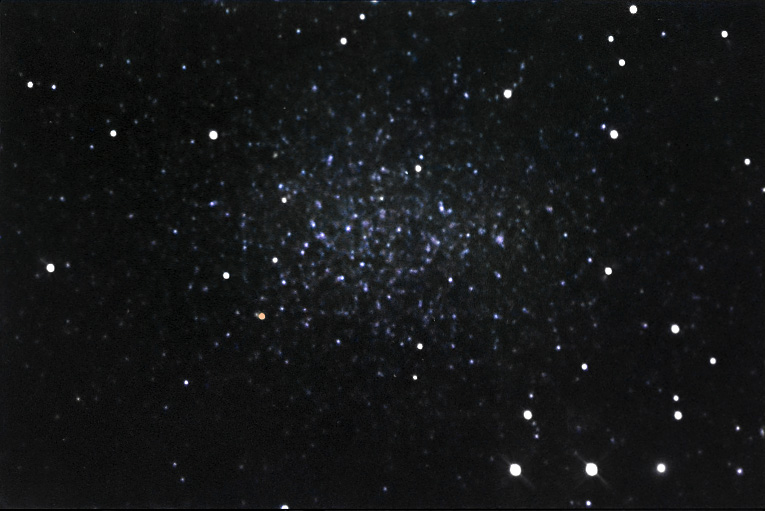|
It doesn't get much harder than this to shoot a deep sky object! The brightest stars in this image that are in the galaxy which is totally resolved across its face are 18th magnitude. Those are the "Super giants". The rest fade down to the scope limit, about 22. Leo 1 is a dwarf galaxy, a companion very near our own Milky Way Galaxy discovered in 1950 by Harrington and Wilson in the Local Group. It is about 230Kp distant, and It was only visually detected by amateurs in the last 15 years, and is only 2/10 of a degree (yep, .2 degree) from the blazing first magnitude Regulus. Light from the nearby brilliant star was zinging all inside my optics, through my multi element corrector plate, bouncing inside the filters in my camera, and making a mess of everything. To say I had some clean up to do was an understatement. Because of this, I wouldn't swear by the final color data, but its the best I could get. Leo 1 is listed at magnitude 11.2, but is spread over 10 arcmins, roughly the size of M13, the great hercules cluster. The larger object on the right side of the galaxy is a globular or star cluster contained witith this object. If you know of any good professional images of Leo that is in true color, Id like to see it. Instrument: 12.5" f/5 Home made Newtonian Platform: Astrophysics 1200 QMD CCD Camera: SBIG ST7E w/Enhanced Cooling Exposure: LRGB = 60:20:20:36 (RGB Binned 2x2) Filters: RGB Tricolor Location: Payson, Arizona Elevation: 5150 ft. Sky: Seeing FMHW = 2.8 arcsec, Transparency 8/10 Outside Temperature: 0 C CCD Temperature: -35 C Processing: Maxim DL, Photoshop, AIP4WIN, PW Pro.
|
||
|
|
||
|
FastCounter by bCentral |
